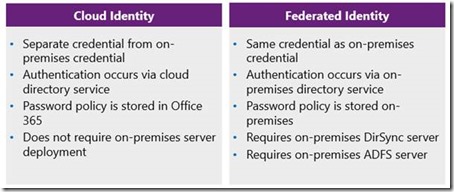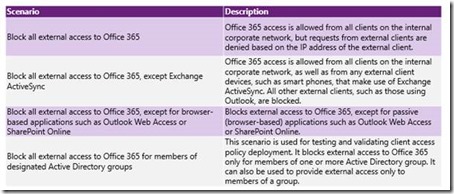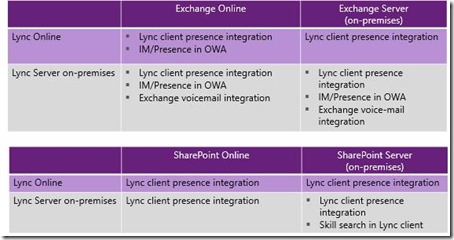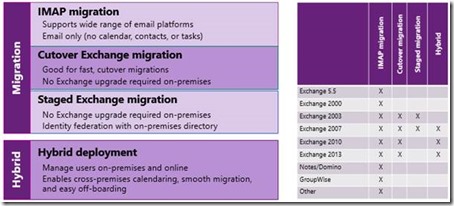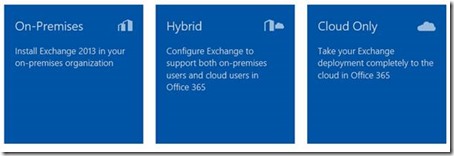TechDays Belgium 2013: Office 365 Do’s and Don’t’s
This year at the Techdays in Belgium, I presented a session on Office 365, and the do’s and don’t’s when evaluating Office 365, based on the most typical questions I get when talking to customers about Office 365. Here’s a short recap of this session…more to be added J
Do 1: Know What You Are Subscribing To
- Office 365 Service Descriptions: http://technet.microsoft.com/en-us/library/jj819284.aspx
- Office 365 Service Updates: http://community.office365.com/en-us/wikis/office_365_service_updates/974.aspx
- Office 365 Service Upgrade Center for Enterprises: http://community.office365.com/en-us/wikis/office_365_service_updates/office-365-service-upgrade-center-for-enterprise.aspx
- Sign-up for a trial: http://alturl.com/rt9j8
- The new Office 365 Deployment Center: http://www.deployoffice365.com/
The new Office 365 Deployment Center is the place to find the tools, guidance, and technical resources to help you pilot and deploy Office 365. With Microsoft’s recommended approach, you can set-up a 25-user pilot quickly and experience the full set of Office 365 service features including the new Office applications. Then, smoothly move your entire organization into production and add advanced features, when needed.
Do 2: Understand Identities
Webcast on “Understand Identities and Single Sign On” available here: http://community.office365.com/en-us/blogs/office_365_technical_blog/archive/2013/02/07/understand-identities-and-single-sign-on-with-our-upcomoing-ignite-webcast.aspx
Do 3: Realize ADFS is more than Federated Identities
- ADFS:
- Enables users to access both the on-premises and cloud-based organizations with a single user name and password
- Provides users with a familiar sign-on experience
- Allows administrators to easily control account policies for cloud-based organization mailboxes by using on-premises Active Directory management tools
- Enables SharePoint Hybrid Search
- AD to Windows Azure AD Quick Start Guide: http://www.itproguy.com/ad-to-windows-azure-ad-quickstart-guide-released/
- Access Control Policies possible with ADFS:
Do 4: Is your environment ready to hook up to Office 365?
- Check your AD with the Microsoft Office 365 Deployment Readiness Tool, that provides analysis of your on-premises environment in preparation for an Office 365 enterprise deployment: http://community.office365.com/en-us/forums/183/p/2285/8155.aspx
- Supported clients
- Exchange: http://technet.microsoft.com/en-us/library/aa996719(v=exchg.150).aspx
- SharePoint Supported Browsers: http://technet.microsoft.com/en-us/library/cc263526.aspx
- Lync:
- Supported Clients: http://technet.microsoft.com/en-us/lync/jj663067.aspx
- Client comparison tables: http://technet.microsoft.com/en-us/library/gg425836.aspx
- Office 365 Client side requirements: http://onlinehelp.microsoft.com/office365-enterprises/ff652534.aspx
Do 5: Check your Network
- Lync:
- Lync 2013 Network Bandwidth Requirements for Media Traffic: http://technet.microsoft.com/en-us/library/jj688118.aspx
- Lync 2010 Bandwidth Calculator: http://www.microsoft.com/en-us/download/details.aspx?id=19011
- Exchange:
- Exchange Client Network Bandwidth Calculator: http://gallery.technet.microsoft.com/office/Exchange-Client-Network-8af1bf00
- SharePoint:
- Plan for Bandwidth Requirements: http://technet.microsoft.com/en-us/library/cc262952(v=office.12).aspx
- Office 365 URLS and IP Address Ranges
- Exchange Online URLs and IP Address Ranges
- RSS Updates for URL and IP Address Range Changes
- Set up your network for Lync Online
Do 6: Check out Azure
- Current Guidance:
ADFS should only be deployed in Azure VM for High Availability.
We would also not recommend a customer deploy the underlying AD domain controller to Azure. There would be latency issues for NTML authentication of domain join machines.
You can deploy corporate domain controllers alongside AD FS on Windows Azure virtual machines, which provides additional guarantees of service availability in the event of unforeseen failures such as natural disasters. This is especially true for online services such as Microsoft Office 365 that can authenticate users directly from their on-premises corporate Active Directory.
- http://weblogs.asp.net/scottgu/archive/2012/07/26/windows-azure-and-office-365.aspx
- Developing Windows Azure Web Sites Integrated with Office 365
- Developing Windows Azure Workflows Integrated with Office 365
- Windows Azure Ad RMS
- Integration with Exchange Online
- Company Confidential
- Company Confidential Read Only
- Do not forward (Works across tenants)
- Integration with SharePoint Online
- There is no support for SharePoint Online Wave 15 (v2013) integration with customer on-premise AD RMS infrastructure.
- Documents that have been protected with RMS can be uploaded to SharePoint Online only in standard document libraries.
- In Office 365 Wave 15 (v2013), SharePoint Online supports RMS integration with the Windows Azure RMS service
- Integration with Exchange Online
Do 7: UC & C: Decide what to keep On Premises and what to move to Online
Do 8: Ready to move Exchange, think about your options
·Exchange 2013 Deployment Assistant : http://technet.microsoft.com/en-US/exdeploy2013/Checklist?state=672-W-AAAAAAAAQAAA
Do 9: Check our Trust Center
Additional info:
- Skydrive Pro
Small part of this:
The SkyDrive Pro app. As you may know, SkyDrive Pro is cloud storage that organizations provision for employees as part of their SharePoint 2013 on-premises and/or Office 365 SharePoint Online deployments.
This personal file storage service is for business use, and users can store, access and synchronize their files using the SkyDrive Pro client software. Users are not limited to synchronizing their personal docs--they can sync any document library to which they have permission (for document libraries where sync is turned on).
As we shared at SharePoint Conference, we're working on native SkyDrive Pro apps for Windows 8 and iOS, both will be coming in summer of 2013. There, too, is a Windows desktop client that ships with Office 2013--and soon this "folder sync" technology will ship as a free, standalone installable client. In addition, the capabilities already come natively in Windows Phone (more on that below in the Office Hub section of this post).
- Customize Click-to-Run, Office 2013 deployment: http://blogs.technet.com/b/office_resource_kit/archive/2013/01/22/office-2013-click-to-run-customization.aspx
- SharePoint 2013 hybrid resources: http://www.microsoft.com/en-us/download/details.aspx?id=35593
- One-way hybrid environment with SharePoint Server 2013 and Office 365
- Two-way hybrid Search environment with SharePoint Server 2013 and Office 365
- Business Connectivity Services Hybrid Overview
- Lync 2013 Hybrid possibilities: http://technet.microsoft.com/en-us/library/jj204805(v=ocs.15).aspx
